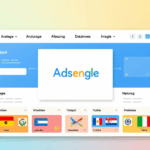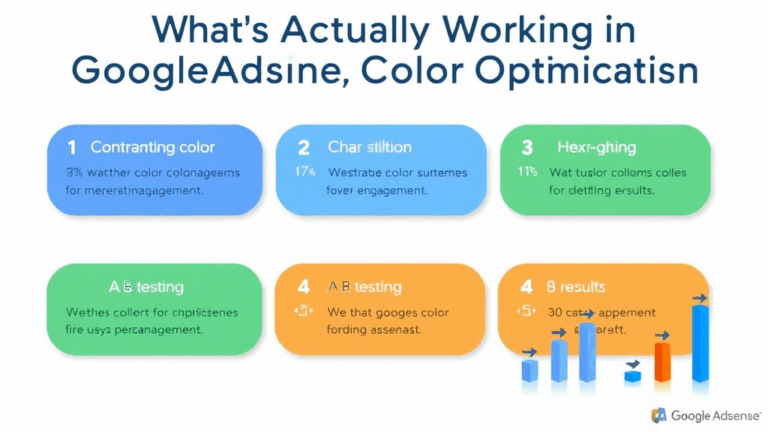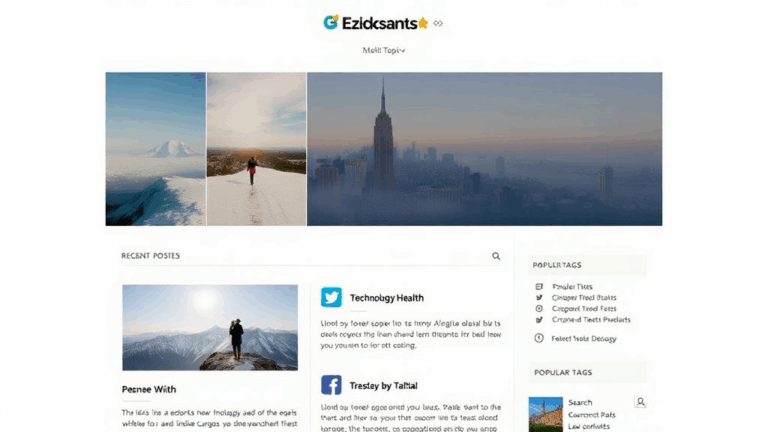AdSense Language Targeting Is Messier Than You Think
AdSense Auto Language Detection: Best Guess Meets Broken Logic
If you’re relying on AdSense to automatically figure out what language your content’s in, prepare to be disappointed. AdSense doesn’t parse your lang attributes consistently, nor does it always respect hreflang tags when indexing. And if the page is dynamically loaded — say, you’re using React or Vue to populate most of the DOM — it might crawl a half-baked render or fall back to whatever Googlebot saw last crawl. Good luck.
On one of my Spanish-language news clones (don’t ask), AdSense was serving English health insurance ads. The markup was clean, content was 100% Spanish, even meta charset was set properly. Still wrong. A quick test with Google’s Mobile-Friendly tool showed that it was pulling an older version of the homepage — before I added in SSR.
“AdSense primarily uses the visible content of your site to determine its language and category.”
Yes. It really does try to guess language from render text, not structured hints. That’s just… incredible.
Country-Based Revenue Disparities: Same Traffic, Different Money
I once made the mistake of translating a well-performing tech post into Portuguese, assuming Brazilian traffic would be just as valuable. Nope. RPM tanked by almost 70%. No click-throughs, mostly brand campaigns, and CPMs were laughable. Same topic, same length — just a locale shift.
It’s not just about language. Advertisers bid differently per country, and the reserve price varies way more than you’d think. US traffic in English brings high-demand verticals: SaaS, fintech, B2B software, etc. Switch to Colombia or Thailand? Suddenly you’re worth pennies unless your content magically surfaces with travel or ecommerce intent.
- French users in Canada earn more than users in France, on average
- German traffic from Austria performs worse than from Switzerland
- AdSense treats Switzerland as multilingual — which breaks category matching
- Your account’s payment country may influence fallback bids (still unclear)
- Some regional language bots don’t fully support Cyrillic segments
None of this is documented. ROI from localization is a roulette wheel until you build a database of actual RPM trends per locale.
AdSense Account Language vs. Page Language
Tiny but maddening quirk: your AdSense account’s UI language doesn’t necessarily need to match your content language. But — when you’re setting up new units manually, the ad preview sometimes shapes based on interface language. Display categories get pre-selected by interface bias.
I had Chinese-language page views surging from Hong Kong, but the ad previews kept defaulting to Traditional verticals in default English. Turns out, setting my AdSense interface to Chinese (zh-Hant) started showing ad unit previews that more closely mirrored what users were seeing. Not guaranteed, just slightly less misleading.
Most people overlook that — because nobody wants to operate their entire AdSense dashboard in a non-primary language just to match a regional preview. But it might explain why your display ads look different from your live visitors’ impressions.
Fallback Content Ads: They’re Language-Agnostic Until It’s Too Late
There’s that weird behavior where auto ads quietly inject fallback content from another linguistic vertical. When you’ve got low impressions or an oddly formatted layout, AdSense tries to show whatever last-resort category it thinks is non-offensive.
I once caught an Indonesian gossip blog serving Japanese restaurant chains as mid-scroll display ads. I literally didn’t have any Japanese in the HTML — not a single line. But there was minimal Indonesian text above the fold, so AdSense defaulted into some kind of “family-safe appliance and chain restaurant” fallback zone. No clicks, lots of white space.
This is compounded by ad fill rate. Multi-language pages with non-targeted, non-high-value regions tend to get served category-neutral inventory when localized demand isn’t strong enough.
Multi-Language Pages Break Contextual Categorization
Now here’s a nasty little undocumented landmine: if your individual page shifts between, say, Spanish and English within a single article — maybe you’re doing a bilingual Q&A — AdSense doesn’t know how to categorize it.
What this means in practice:
- No strong contextual targeting = junk ads
- Low CPM and click rates = AdSense deprioritizes category fill
- Responsive units start collapsing or show irrelevant categories
You’d think it’d at least segment the ad slots based on content above or near the slot. But nope. According to a throwaway line buried inside a Hangouts Meet transcript from a Google Publisher call — yep, I attended one — contextual signals are generated from the entire page content aggregate. So if your page is 50/50 English and Arabic, congrats: your bids are ghosted from both markets.
Quota Drain from Country Mismatch
This one’s subtle. If your content is in one language, but the majority of your visitors are from another country that doesn’t favor that language, you can silently drain your quota priorities. Especially on new sites. Google seems to ramp categories for pages that align well across content language, geo, and TLD. Miss one of those, especially on a .com that’s serving Farsi to German users, and you get stuck in very low-bid limbo.
I fell into this when I bought a French finance blog with 80% Moroccan traffic. The TLD was .fr, all content in proper French, but the RPM was miserable and the ad fill was inconsistent. The kicker? Google saw it as regional content for North Africa, but the TLD led to French advertiser index conflicts. One of the few times someone from the AdSense Partner team admitted, “That mismatch can deprioritize fast-fill CPMs.”
No fix, just awareness.
Localized Searchboxes, Global Madness
Small tip with big implications: if you’re using the AdSense Search Box component and have a multilingual site, do not assume the search results will respect user language preference automatically. You actually have to localize the search form itself, down to the name attributes, or Google’s results page will default back to the publishing account’s country.
Also: country-specific search results cx values completely ignore browser Accept-Language headers. I tested this by swapping between a Dutch and Turkish browser — the AdSense-hosted result pages still defaulted to English because the widget was generated from a US-based code snippet. No way to update that dynamically without custom build tooling.
<script async src="https://cse.google.com/cse.js?cx=your-code-here"></script>
<div class="gcse-search"></div>
You gotta manually create a new cx engine for each major language-instance you support. It’s the kind of bureaucratic overhead that makes you wonder if they even use their own tools.
The One JSON Log That Told Me Everything
Okay this was wild. I had a malfunctioning unit on an Arabic-language cooking site — the wide skyscraper just wouldn’t display on mobile. After exhausting tagById tracking, I opened Network tab and found a GET request to pagead2.googlesyndication.com/pagead/js/adsbygoogle.js that returned empty. No ad markup at all.
But — then I saw a quietly embedded debug_experiment block in a separate JSON payload that contained this line:
“inventory_disqualified_language_mismatch”
Wasn’t in any frontend error. Not visible in the console. That little JSON log buried in a chain of request metadata told me that AdSense had disqualified that ad unit from serving due to mismatch of expected vs detected page language.
Guess what fixed it? Adding a hard-coded <meta http-equiv="Content-Language" content="ar"> tag — which they tell you isn’t necessary. Apparently, in rare cases, the classifier model won’t update from dynamic tags.














